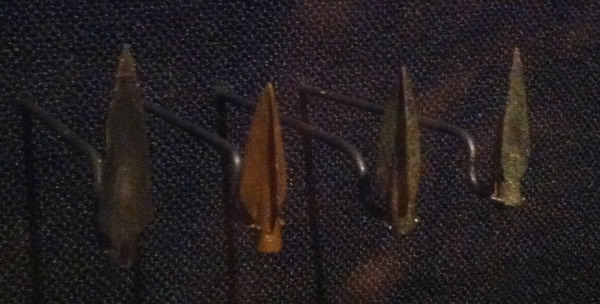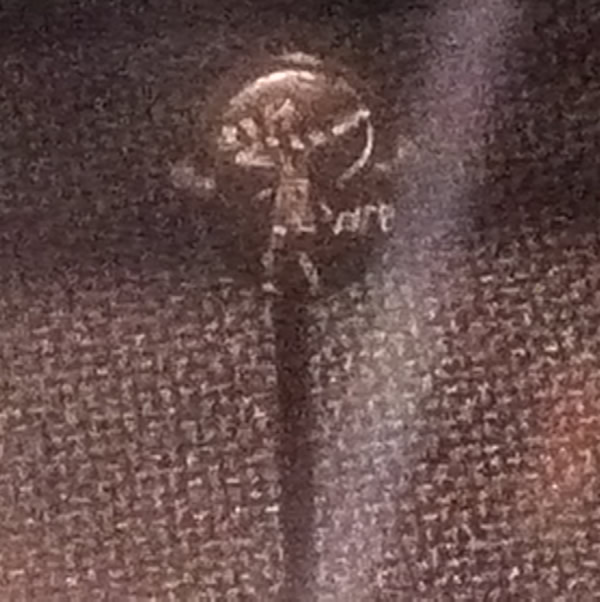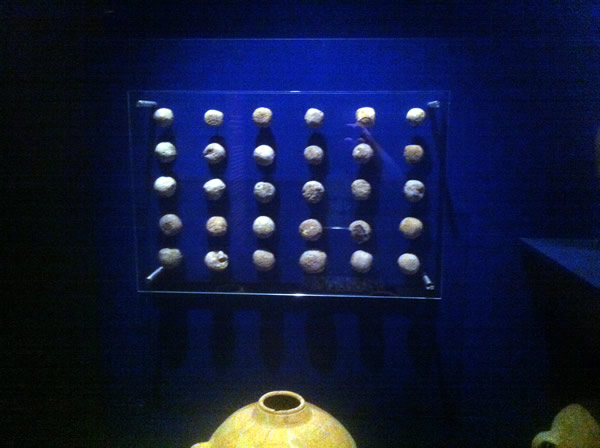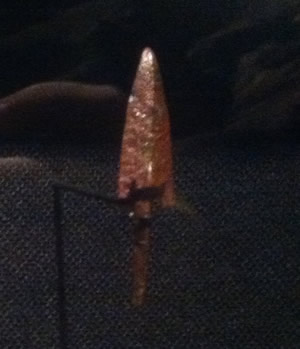The Dead Sea Scrolls exhibit at the Franklin Institute was a rare opportunity to see one of the more remarkable archeological discoveries from the twentieth-century. There were some good hype moments throughout the exhibit, including a short, live talk, explaining the significance of the scrolls.
The exhibit also did a great job of explaining all the various people and empires that lived near the Dead Sea including the Babylonians, Greeks, Romans, Byzantines, Ottomans, and others. There were some artifacts available from each group of people. Those unfamiliar with some of the great empires of history got a quick lesson from this exhibit.
The exhibit had only 10 of the 900-plus scrolls, so they supplemented with loads of other ancient items from the region such as pottery, ossuaries, and a few weapons.
In the weapons department, there were some Scythian arrowheads, dating from the sixth-century B.C. The Scythians were a horse people from modern-day Iran, likely originating from the Altai Mountains in modern-day southwestern Mongolia. The Scythians wreaked havoc on the Assyrians in the seventh-century B.C., eventually allying with the Babylonians to defeat the last of the Assyrian kings. ((John Keegan, A History of Warfare (New York: Alfred A. Knopf, 1994), 177-178.))

There was also a fascinating little stone seal, featuring an archer. Dating back to the seventh-century B.C., it had Hebrew writing on it. It was thick, but the diameter was between a dime and a penny in size. My photo is horrendous, but you get the idea.

If you ever wondered what sort of rocks David might have thrown at Goliath, look no further than these baseball-sized stones, dating back to the eight-century B.C. Without a sling, one could easily throw one of these and take a man out of a fight, or even crack his skull. I always envisioned David picking up a random rock, but these were crafted for war.

This bronze arrowhead dates back to the first-century and it was possibly part of the Roman siege of Jerusalem (70 AD).

As for the scrolls, photographs were prohibited. The exhibit presented them in a large circle with descriptions, translations, and the actual scrolls, which are all fragments. The scrolls were small, I mean tiny. I doubt few could write that small today. The contents included Biblical texts from Exodus, Deuteronomy, Psalms, and others. There were also some Apocryphal texts and even commentaries on Biblical texts.
The experience was well worth the price of admission.
